I am working on a game where the character will be controled by a set of 4 buttons like in the old consoles. I used Tile Map in spritekit to create the map. Everything works fine (the players is moving when pressing the buttons, the scene follow the player) except for the fact that my 4 buttons also move when the character move. Up to the point that the 4 buttons move off screen and i have no control of it anymore. How can we anchor the 4 buttons to, let say, bottom right of the screen? Below is the code i used to create the controlled buttons
func controlButton() {
button = SKNode()
moveUpButton = SKSpriteNode(imageNamed: "moveup")
moveUpButton.alpha = 1
moveUpButton.setScale(1.5)
moveUpButton.position = CGPoint(x: 400 - self.frame.size.width/2, y: 0 - self.frame.size.height/2)
moveUpButton.zPosition = 2
moveLeftButton = SKSpriteNode(imageNamed: "moveleft")
...
moveRightButton = SKSpriteNode(imageNamed: "moveright")
...
moveDownButton = SKSpriteNode(imageNamed: "movedown")
...
button.addChild(moveUpButton)
button.addChild(moveLeftButton)
button.addChild(moveRightButton)
button.addChild(moveDownButton)
self.addChild(button)
}
and here is the code i used to create the tile map, adding node with physics body for tile containing wall:
func setUpSceneWithMap(map: SKTileMapNode) {
let tileMap = map
tileMap.setScale(1)
tileMap.position = CGPoint(x: 0 - self.frame.size.width/2, y: 0 - self.frame.size.height/2)
let tileSize = tileMap.tileSize
let halfWidth = CGFloat(tileMap.numberOfColumns) / 2.0 * tileSize.width
let halfHeight = CGFloat(tileMap.numberOfRows) / 2.0 * tileSize.height
for col in 0..<tileMap.numberOfColumns {
for row in 0..<tileMap.numberOfRows {
let tileDefinition = tileMap.tileDefinition(atColumn: col, row: row)
let isEdgeTile = tileDefinition?.userData?["isWalls"] as? Bool
if (isEdgeTile ?? false) {
let x = CGFloat(col) * tileSize.width - halfWidth
let y = CGFloat(row) * tileSize.height - halfHeight
let rect = CGRect(x: 0, y: 0, width: tileSize.width, height: tileSize.height)
let tileNode = SKShapeNode(rect: rect)
tileNode.position = CGPoint(x: x, y: y)
tileNode.physicsBody = SKPhysicsBody.init(rectangleOf: tileSize, center: CGPoint(x: tileSize.width / 2.0, y: tileSize.height / 2.0))
tileNode.physicsBody?.categoryBitMask = gamePhysics.Wall
tileNode.physicsBody?.collisionBitMask = gamePhysics.Player
tileNode.physicsBody?.contactTestBitMask = gamePhysics.Player
tileNode.physicsBody?.isDynamic = false
tileMap.addChild(tileNode)
}
}
}
}
Below is also the code where i add the map to scene:
func createScene() {
self.physicsWorld.contactDelegate = self
for node in self.children {
if (node is SKTileMapNode){
if let theMap:SKTileMapNode = node as? SKTileMapNode {
setUpSceneWithMap(map: theMap)
}
}
}
createPlayer()
createCamera()
}

